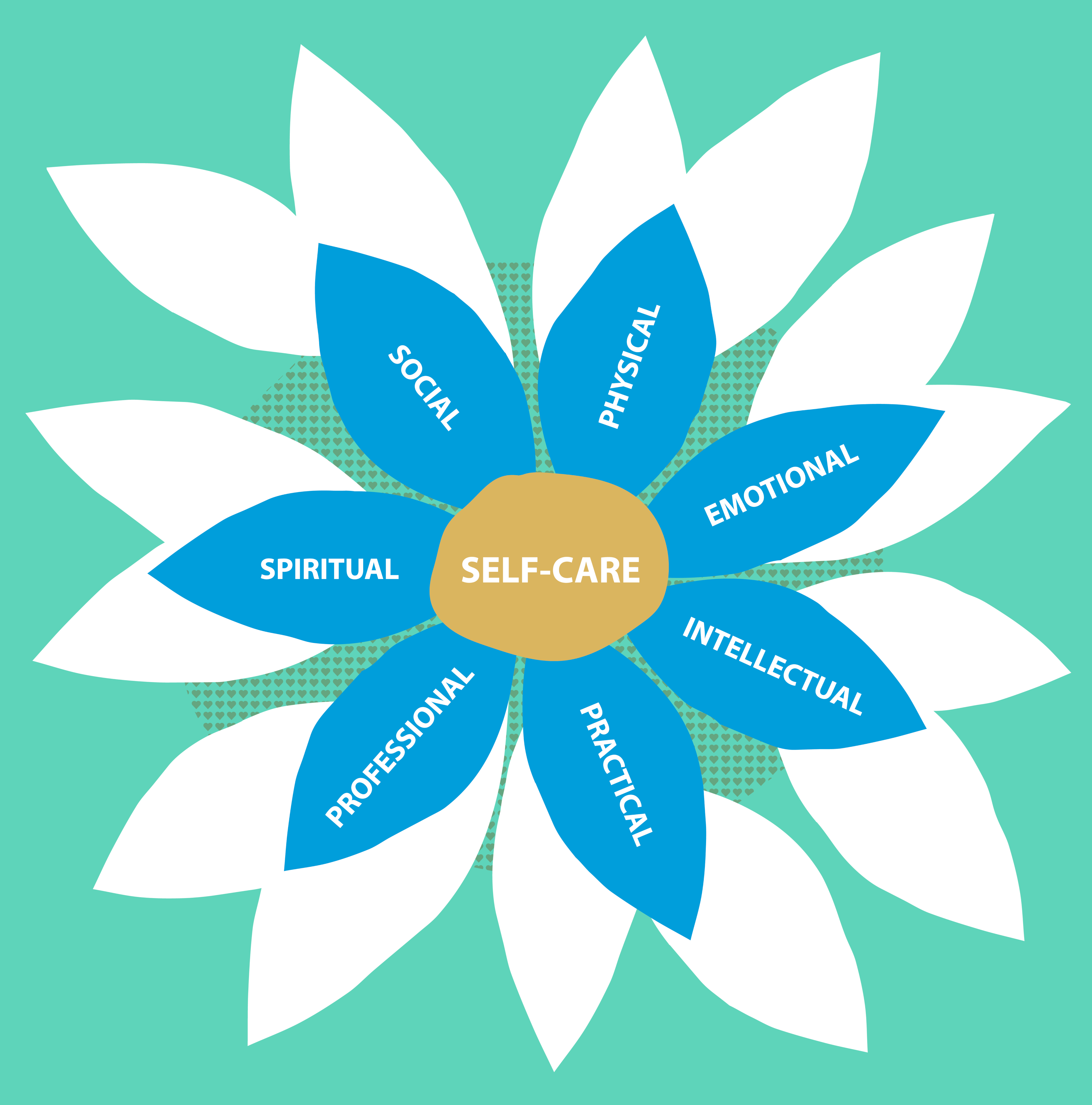Self-care

|

|

|

|

|

|

|

|

|

|

|

|

“Self-care is the art and science of attuning and responding to your needs and desires moment to moment.” -Renée Trudeau
In the latest research self-care shows itself to be especially important in times of crises. When you take care of yourself, you will more likely be able to show up at work and in your community and be of help to others. A centred and peaceful adult is an invaluable resource for any young person living in a difficult situation. Also, if you enter a difficult day feeling strong and good about yourself, you will most likely be able to navigate through the day in a more sustainable way – and be able to show up to work tomorrow as well. An important aspect of self-care is also to recognise that we don’t care for ourselves only for the sake of our professional lives – but we take care of ourselves because we are all entitled to have a full and nourishing everyday life. We are all worthy of finding joy and reinforcing our own wellbeing in our free time as well as at work, however demanding our circumstances are.
Self-care means actions you take that enhance your physical, psychological or emotional wellbeing. It often starts with turning inwards and creating some stillness amongst the business of life to hear what you really need. Renée Trudeau emphasises this aspect in her beautiful definition of self-care: “attuning and responding to your needs and desires moment to moment”. The things that help you feel balanced and well, might not work for someone else. Also, what is working for you today, might not make you feel better next month. For this reason, the one most important self-care practice is actually checking-in with yourself: tuning in to recognize what’s going on inside you. You can incorporate this to your check-ins (“Taking a moment” exercise from the chapter Inner peace and resilience). And after recognising, you can ask yourself: what do I need right now? What could bring me joy right now, even just a little bit? And then taking action to make those things happen.
Powerful and restorative self-care is a combination of these two types of activities (A & B): it increases your resources in the long run, as well as brings you joy in the moment. It is common that self-care becomes just another responsibility on your to-do list if you are leading a demanding life – you might think you need to go jogging 4 times a week and feel exhausted about it even before you start. Maybe your system needs something more relaxing? On the other hand, you might have “default routines” such as using a lot of time on the screen in the evening watching TV series. While there is nothing wrong with relaxing with a good movie or TV series from time to time, you might feel tired and numb afterwards if you spend too much time doing it. Maybe our body and brain need something more energising, or something that ignites curiosity to re-balance, instead?
A useful and restorative self-care practice is something that you look forward to – and you feel good about yourself afterwards. It doesn’t have to be big – it is often the little things that we do that make a huge difference.
As simple as it might sound, self-care means putting yourself on the top of your list of priorities. When you start showing up for yourself more and more, and taking small actions to prioritise yourself, you will be sending a powerful message to yourself: “I matter. And I can rely on myself”. This way, even really small changes in your everyday life will start to make a difference in enhancing your resilience and wellbeing. While self-care mainly means things that we can do ourselves to promote our own wellbeing, an important part of self-care is also noticing when you need help and getting that help – whether that means seeing a friend, a doctor, or a therapist.
Most definitions of self-care divide self-care into seven different areas. While these areas overlap partially, it might still be clarifying to consider these areas and explore their significance in your own life. The seven areas are:
Dr. Amanda Cassil emphasises the importance of the process of creating new routines slowly – not trying to fix all areas of self-care at once. If creating more permanent self-care routines resonates with you, we recommend revisiting this topic every three weeks for at least the following 4 months. In practice this could mean first evaluating which area of self-care feels the most urgent right now, setting yourself one small step to bring this area of self-care into action, trying it out daily for three weeks. After three weeks, then you can evaluate if this action is one that you wish to keep, or if you wish to change it somehow. If you feel you would like to add something new to your routine, you can introduce a new small step and repeat this pattern in a 3-week cycle as long as you are happy with your routine. Below you will find the specific exercises which will provide you with tools to create your own self-care plan.
There really is no ally better suited and informed about your special needs and wants than you yourself. With these exercises, you can intentionally start to build even more safety and joy in your own life – starting from within.
TIP! Working with the nervous system can be a very holistic self-care practice healing your physical, emotional, and spiritual side at the same time and benefiting the other areas as well. This is because the nervous system is the link between the body and the mind. Self-regulation of the nervous system can also be the one step you can take in case you find it difficult to know what kind of self-care you need. You can read more about regulating the nervous system in the chapter “Self-regulation during challenging times”.

TIP! You can incorporate “Morning check-in” with the exercises “Taking a moment” (in chapter Inner peace and resilience) and “Check-in 2” (in chapter Self-regulation during challenging times).